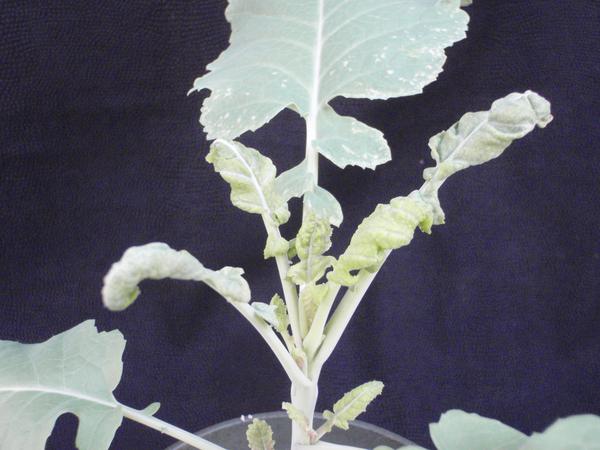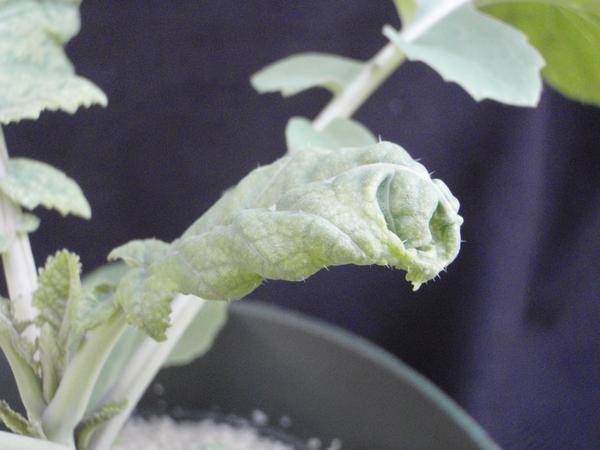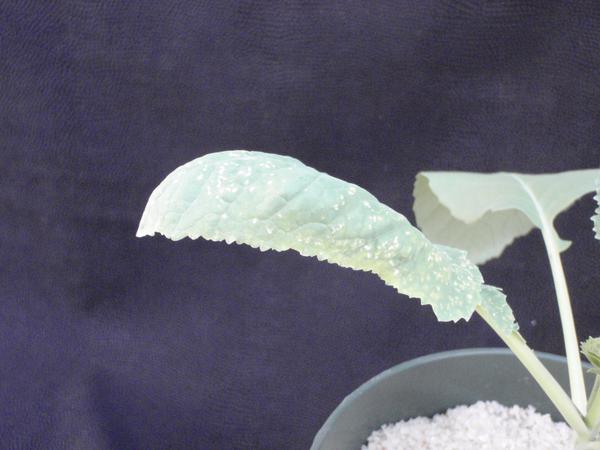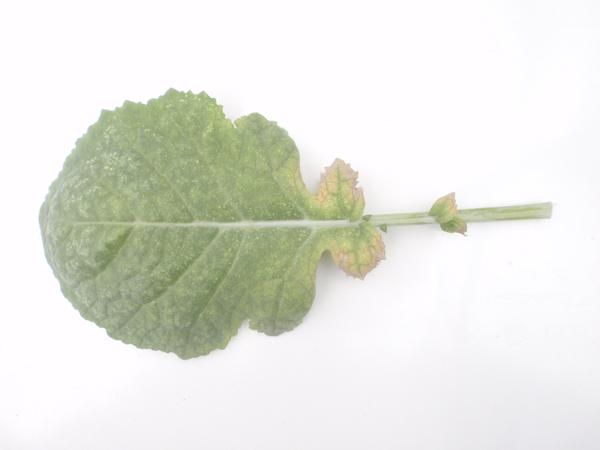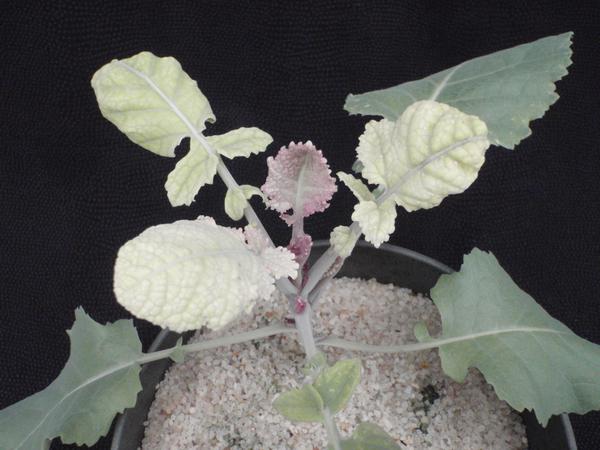From the Field - Agronomy Notes
In this Brassica carinata (Ethiopian mustard) research update, we highlight the symptoms of calcium deficiency. These images are part of a project by the Southeast Partnership for Advanced Renewables from Carinata (SPARC) to develop a diagnostic series for the identification of nutrient disorders of Carinata. Carinata is an exciting new crop in the Southeast used for a wide variety of primary and secondary agricultural products including cover crops, feedstock, high protein meal, and jet fuel. It is similar in management to canola given both canola and carinata are winter annual Brassica oilseed crops. However, carinata oil is not edible.
Symptoms
Calcium (Ca) is bound as cellular structures in plants, and is consequently plant-immobile. This means symptomology will manifest on the new growth rather than older foliage. The first sign of calcium deficiency will be evident on the growing tip, showing a curling of the margin of the new leaves (Figure 1). These new, expanding leaves will appear to develop normally except for the leaf margin, which will curl either inward or upward resulting in a cupping of the leaf (Figure 2). The leaves may also have small brown spots randomly distributed toward the petiole near the margin of the leaf (Figure 3).
The next stage of calcium deficiency results in general interveinal chlorosis of the new growth, particularly near the petiole (Figure 4). As the developing leaves continue to expand, the center of the leaf will expand while the margin does not, resulting in a more dramatic cupping of the leaf and occasionally splitting or cracking near the leaf margin. In more advanced stages, the leaf will turn from interveinal yellowing to interveinal reddening or purpling (Figure 5).
The final and most advanced stages of calcium deficiency result in severely distorted growing tips which appear as spiked petioles (Figure 6). The growing tip will eventually die, resulting in the proliferation of axillary shoots (Figure 6). These shoots will also appear as unexpanded leaves or spiked stems. To ensure proper diagnosis the above material should be used in conjunction with a leaf tissue sample and/or field test.
Key Contact
Key Contact Central East:
Dr. Angela Post, NC State Univ. Department of Crop and Soil Sciences – angela_post@ncsu.edu
Dr. Carl Crozier, NC State Univ. Department of Crop and Soil Sciences – ccrozier@ncsu.edu
Key Contact South East:
Dr. Michael Mulvaney, UF/IFAS West Florida Research and Education Center – m.mulvaney@ufl.edu
Primary Authors: Paul Cockson, Dr. Carl Crozier, Dr. Ramon Leon, Dr. Michael Mulvaney, Dr. Angela Post, and Dr. Brian E. Whipker
Project Team: NC State Univ. personnel Paul Cockson (NC State B.S. student in Agroecology), Ingram McCall (Research Technician in Horticultural Science at NC State), Dr. Carl Crozier (Professor and Extension Specialist at NC State), Dr. Ramon Leon (Assistant Professor at NC State), Dr. Angela Post (Assistant Professor and Extension Specialist NC State), and Dr. Brian Whipker (Professor of Floriculture and Plant Nutrition in Horticultural Science at NC State). Univ. of Florida personnel Dr. Michael Mulvaney (Cropping Systems Specialist at UF/IFAS West Florida Research and Education Center.
Publication date: Jan. 1, 2021
N.C. Cooperative Extension prohibits discrimination and harassment regardless of age, color, disability, family and marital status, gender identity, national origin, political beliefs, race, religion, sex (including pregnancy), sexual orientation and veteran status.

